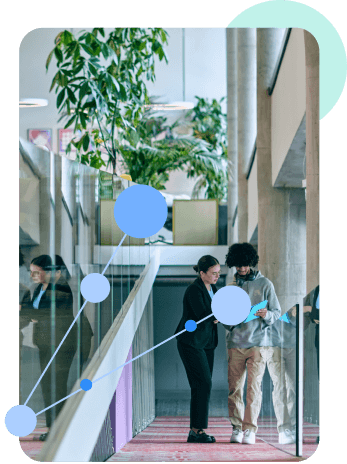Overview
In today’s rapidly evolving office building market, meeting sustainability targets and achieving energy efficiency are not just trends but essential strategies for cost management and company brand.
The dynamic nature of work environments, particularly with the rise of hybrid models, requires advanced solutions that can adapt to flexible occupancy and space usage.
PointGrab’s AI-based IoT sensors play a crucial role in this context by enabling sustainable workspace management, with out of the box integration to energy control systems.

Use Case KPIs
PointGrab sensors measure multiple parameters of occupancy, enabling to assess in real time the required environmental conditions within specific office spaces.
Key benefits include:
- ENERGY EFFICIENCY: Optimize lighting, heating, ventilation, and air conditioning (HVAC) systems to match real-time occupancy, ensuring comfortable working conditions tailored to the actual number of people in a space.
- COST REDUCTION: Lower operational waste such as cleaning and food waste in a major cost item for the business.
- SUSTAINABILITY METRICS: Support building certifications such as LEED or BREEAM by providing data to back up claims of energy efficiency and reduced carbon footprint.
Applicability in Workspace Environments
PointGrab’s sensors are versatile and can be implemented across various office spaces, including:
- MEETING ROOMS AND COLLABORATION SPACES: Turn on and adjust environmental controls based on true occupancy, alert the cleaning services to prepare the space for the next meeting, and switching off lights when the room is empty.
- DESKS AND INDIVIDUAL WORK AREAS: Use occupancy to optimize space climate control to prevent overcooling, overheating, or over-lighting unoccupied desk areas.
- COMMON AREAS: Tailor cleaning rounds and maintenance schedules to actual usage patterns, for example in restrooms, cafeterias, training rooms, etc.

Unique Data Provided by CogniPoint PointGrab Sensors
PointGrab sensors provide actionable, rich and informative data that can be used both in real-time for immediate actions (alerting cleaning, switching off lights, adjusting HVAC parameters) as well as historical data for long-term energy usage planning and future operational cost saving.
The data provided by the CogniPoint sensors s data which includes:

OCCUPANCY COUNTING
Real-time headcounts in specific areas, adjusting operations dynamically through BAS/BMS integration, and collection of historical data for future planning

VIRTUAL TRAFFIC LINES
Monitoring floor and area movement patterns to optimize the flow of energy across the floor and between floors

PEOPLE MOTION
sub-second PIR triggered by movement into a space. Understanding how spaces are used throughout the day/week/month, which supports energy management and operational planning, which can be then adjusted on daily/seasonal/annual basis
Conclusion
By leveraging PointGrab’s sensing data system, companies can achieve sustainability targets and reduce operational costs, both keeping the planet green and improving bottom line. The unique real-time and historical data from your workspace is used by BMS and Energy Management systems through off the shelf integrations



